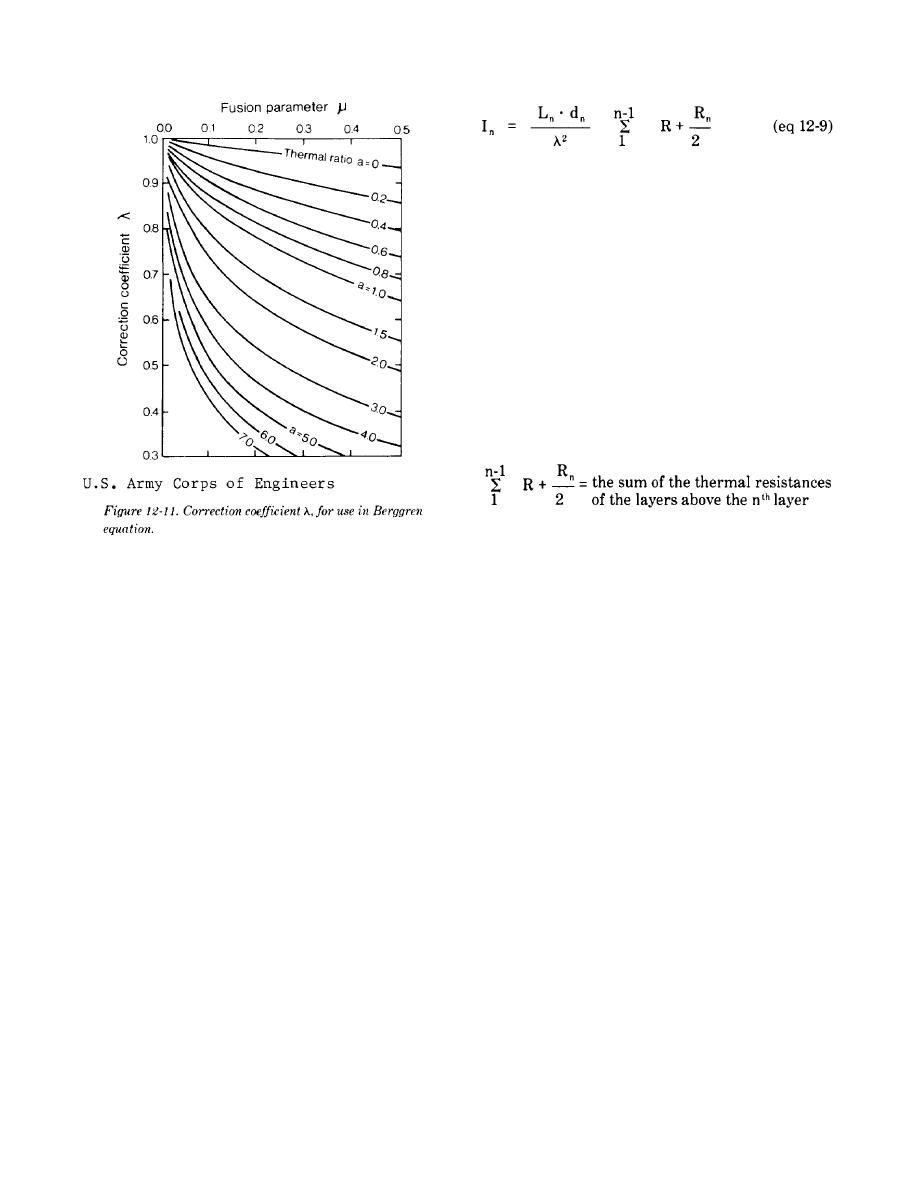
TM 5-852-5/AFR 88-19, Volume 5
where
1n = the partial freezing or thawing index
required to penetrate the nth layer,
EFhr
Ln = volumetric latent heat in the nth layer,
BTU/ft3
dn = thickness of the nth layer, ft
8 = the coefficient based on the weighted
average values for down to and
including the nth layer (see figure 12-
13)
layer, hr ft EF/BTU.
(1) Equation 12-4 is the Stefan solution for a
homogeneous material with a step change in surface
temperature (see example 12-9a). This is modified
(2) The solution for multi-layered systems is
in equation 12-5 to account for the temperature
facilitated by tabular arrangement of the interme-
change in the freezing or thawing soil. Equation 12-
diate values. The penetration into the last layer must
6 is a two-layer solution of the Stefan equation that
be solved by trial and error to match the total
is useful for calculations involving snow cover, a
freezing or thawing index at the site. It is necessary
gravel pad or a board of thermal insulation, in which
to determine the temperature condition at the
the surface layer has no latent heat and the equation
ground surface to determine subsurface thermal
is simplified (see para 12-9b and c). Equation 12-7
effects, including the depth of freezing and thawing.
is a close approximation of the Neumann solution
Since air temperatures are readily available, but
when the ground temperatures are near freezing.
surface temperatures are not, a correlation factor
Equation 12-8, the modified Berggren equation, is
which combines the effects of radiation, and
perhaps the most commonly used approach for
convective and conductive heat exchange at the air-
determining thermal responses of soils. When the
ground surface is used:
soil has a high moisture content the X coefficient
approaches unity, and the equation is identical to the
Ig = n Ia
(eq 12-10)
Stefan approach (equation 12-4). In climates where
the mean annual temperature is near or below
where
freezing, the thermal ratio approaches zero and the
[A] coefficient is greater than 0.9. In very dry soils,
Ig = ground surface freezing or thawing
index, EF hr
the soil warming or cooling can be significant and
Ia = air freezing or thawing index, EF hr
should be included. Multilayered soil systems can be
solved by determining that portion of the surface
n = n-factor, ratio of the surface and air
freezing or thawing index required to penetrate each
temperature indices.
layer. The sum of the thicknesses of the frozen or
thawed layers whose indices equal the total index is
The n-factor is very significant in analytical ground
equal to the depth of freeze or thaw. The partial
thermal considerations. It is highly variable and is
freezing or thawing index to penetrate the nth layer
usually estimated from published observations such
is
as the values listed in Table 12-3.
12-15



 Previous Page
Previous Page
